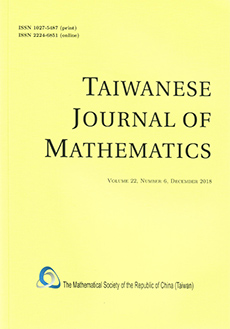Abstract
In this paper, we present an efficient fully-discrete local discontinuous Galerkin (LDG) method for nonlinear reaction-diffusion systems, which are often used as mathematical models for many physical and biological applications. We can derive numerical approximations not only for solutions but also for their gradients at the same time, while most of methods derive numerical solutions only. And due to the strict time-step restriction ($\Delta t = O(h^2_{\min})$) of explicit schemes for stability, we introduce the implicit integration factor (IIF) method based on Krylov subspace approximation, in which the time step can be taken as $\Delta t = O(h_{\min})$. Moreover, the method allows us to compute element by element and avoid solving a global system of nonlinear algebraic equations as the standard implicit schemes do, which can reduce the computational cost greatly. Numerical experiments about the reaction-diffusion equations with exact solutions and the well-studied Schnakenberg system are conducted to illustrate the accuracy, capability and advantages of the method.
Citation
Na An. Chaobao Huang. Xijun Yu. "LDG Methods for Reaction-diffusion Systems with Application of Krylov Implicit Integration Factor Methods." Taiwanese J. Math. 23 (3) 727 - 749, June, 2019. https://doi.org/10.11650/tjm/180902
Information





